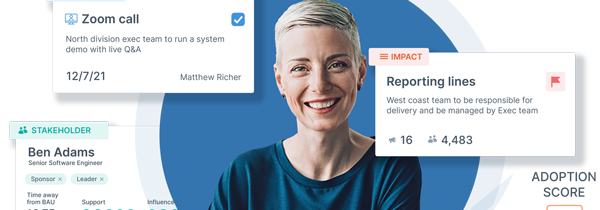ACADEMIC CORNER
The Missing Ingredient in Job Redesign
Many change managers are missing a critical ingredient when they redesign roles, leading to unnecessary failure!
In the discipline of change management we often discuss how jobs must be redesigned due to the impact of change management strategies and subsequent interventions upon the organization. The typical analysis of job redesign suggests the following three options as the basic foundation of strategies to address the need to restructure tasks:
- Job Enrichment
- Job Enlargement
- Job Rotation
The primary reason to pursue these strategies is to design jobs that motivate employees and make them feel an important asset to the company. The majority of this work is to ensure we have the "right people on the right tasks at the right time".
The psychological approach usually deployed by change leaders is to align the cognitive abilities of the employees with their affective feelings so as to approach work that they have the "mental" capacity to perform and "enjoy doing" in order to improve their job satisfaction and as a result, enhance productivity.

Traditional thinking about job redesign is flawed
Historically, job redesign was aimed at producing these four outcomes for impacted employees:
1) Quality of work-life
Doing work you enjoy that is also mentally stimulating encourages knowledge workers to perform better because they feel the work is meaningful, and makes a contribution to the organization's bottom line.
2) Productivity
Aligning job functions and duties that are in line of sight with what employees are currently doing increases employee motivation to perform at their best while benefiting the larger organization achieve its business goals.
3) Sense of belonging
Employees who doing work they enjoy have higher retention rates as well as a sense of personal commitment to a job well done.
4) Person-job fit
Job redesign is designed to play an important role in creating job roles that “fit” the personality of employees in the role while stretching their mental capabilities creating a culture of a meritocracy.
Given these four outcomes, why then do many of these well intended job redesigns fail to produce the intended results, rather leading to the unintended results of de-motivation and job failure?
The missing ingredient: how people approach problems
In many cases, the missing link is a mismatch with the newly redesigned job and the way that individual employees approach problems. We always wonder why employees with great mental capabilities who like their jobs fail to perform up to the organizations expectations. What we fail to consider is given free will, how will an employee approach the work from a behavioral perspective.
Job redesign not only needs to consider the skill level (cognitive) as well as work the employee likes to do (affective) but also an employee’s innate will of how they will approach problem solving (‘conative’) . Without the alignment of these three critical elements, we create “The Perfect Storm” for employee failure and organization disappointment with the job redesign efforts.
As change agents, we are all familiar with cognitive tests that measure our IQ, our reasoning ability, knowledge, experience and education. Personality tests identify how you feel about work and what your interests are when performing work.

Measuring problem solving
The problem solving part of the mind and its striving instincts are unique to every human and remain unchanged from birth. When we redesign work without taking into consideration a person’s conative profile we may inadvertently be creating new jobs that do not match a person’s conative profile which may lead to conative stress and burnout.
Kathy Kolbe developed the only validated conative assessments that measure how we approach tasks based on our internal drives and instincts. These striving instincts drive a person’s natural way of taking action. A person’s conative profile - better known as their modus operandi (MO) - is observable and quantifiable.
Kolbe’s proprietary instruments measure four distinct action modes that determine how an individual will approach work given free will to perform that tasks that best match their MO profiles. The action modes that Kolbe uncovered through her research were 'fact finder', 'follow-thru', 'quick start' and 'implementer'.
Having labeled these problem solving modes, Kolbe created indexes that could be clearly defined from a behavioral perspective, measured by driving instinct, rather than personality or IQ. The Kolbe index results have been proven to be reliable and valid and unbiased by gender, age, race, and do not change with time.
As a change practitioner, I am now able to add an important dimension to my consulting tool kit that allows me to assess an employee’s MO, compare it to the new job that has been redesigned and help the employee to uncover if the new role is a good match to their MO. This technology is especially useful to avoid current employees who are performing well being moved into new roles that require a different MO.
We'd love your thoughts - leave your comments below!

